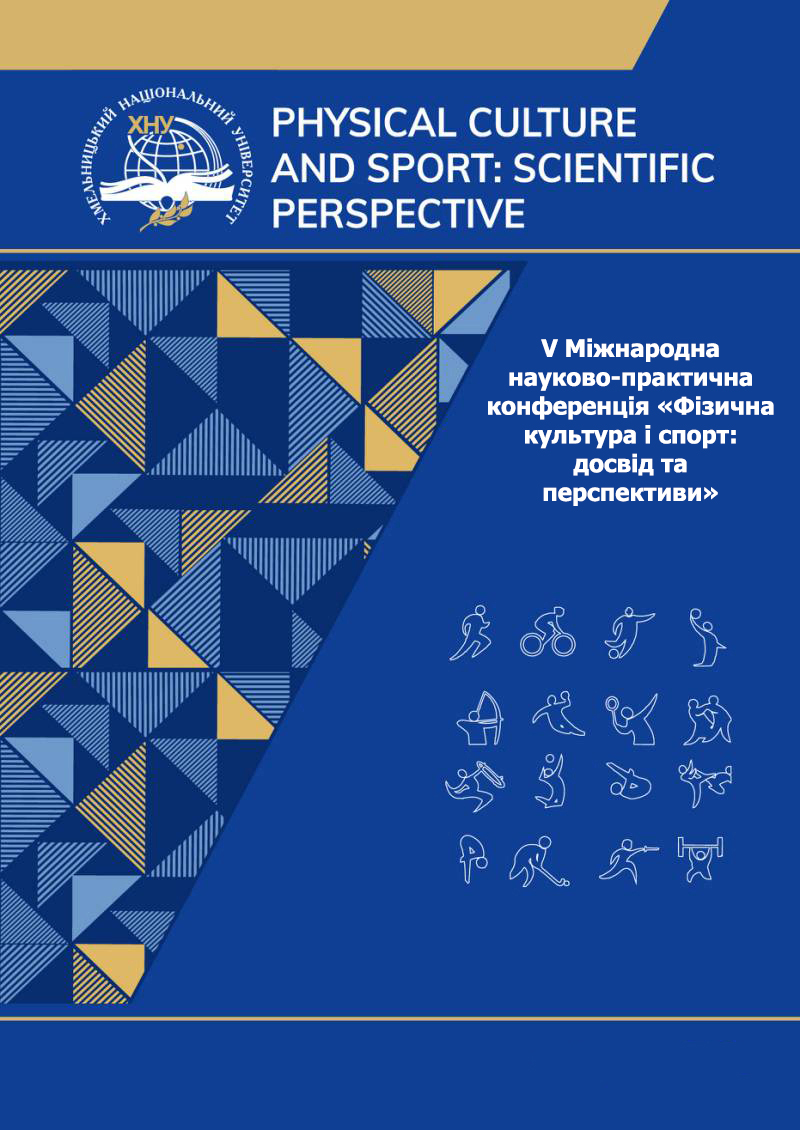AGE DYNAMICS AND ITS INFLUENCE ON THE PHYSICAL PREPAREDNESS OF SOLDIERS
DOI:
https://doi.org/10.31891/pcs.2025.1(1).43Keywords:
age-related changes, basic military training, correlation relationships, test physical exercisesAbstract
This article analyzes the correlation relationships between the age of military personnel, their physical fitness level, and the results of performing test physical exercises. The study was conducted at the stage of basic military training with the participation of 273 military personnel, divided into age categories: 25–29, 30–34, 35–39, 40–44, and 45–49 years. The assessment of physical fitness was carried out on the basis of a specially developed methodology, which involved the performance of a complex of physical tests. Using correlation analysis with the non-parametric Spearman's criterion, the peculiarities of age-related influence on the level of physical fitness were established, which made it possible to identify age groups in which a statistically significant relationship is observed.
The results of the correlation analysis showed no statistically significant relationship between age and the level of physical fitness in military personnel aged 25–29 years (r = -0.204, p > 0.05), while strength exercises demonstrate high correlation relationships with the overall level of physical fitness (from r = 0.838 to r = 0.917, p < 0.001). In the category of military personnel aged 30-34 years, age does not affect the results of test exercises, and the greatest correlation relationship with the level of physical fitness is observed for the test physical exercise of bending and unbending arms in a lying position (r = 0.928, p < 0.001). In military personnel aged 40-44 years, an inverse correlation relationship was found between age and the level of physical fitness (r = -0.352, p < 0.01), which indicates a tendency to decrease physical fitness at an older age. In the group of military personnel aged 45-49 years, an inverse correlation relationship of age with the level of physical fitness was also found (r = -0.287, p < 0.05), and the largest correlation relationships were noted for strength exercises (from r = 0.644 to r = 0.868, p < 0.001). Overall, the results indicate a significant impact of test exercises on the level of physical fitness and a tendency for it to decrease in older age groups.
References
Abt J. P., Perlsweig K., Nagai T., Sell T. C., Wirt M. D., Lephart S. M. Effects of Age and Military Service on Strength and Physiological Characteristics of U.S. Army Soldiers // Military Medicine. – 2016. – Vol. 181, Issue 2. – P. 173–179. – https://doi.org/10.7205/MILMED-D-15-00036.
Medeiros F. J., Lourenço J. V. D., AedoMuñoz E. A., Perez D. I. V., Santos M. A. F., Brito C. J., Miarka B. Physical fitness test performance probability with increasing age: suggestions for practical applications in military physical training // Rev Bras Cineantropom Desempenho Hum. – 2020. – Vol. 22. – P. 71733. – DOI: http://dx.doi.org/10.1590/1980-0037.2020v22e71733.
Zhembrovskyi S. M. On the issue of reforming the physical training system of the Armed Forces of Ukraine at the present stage / S. M. Zhembrovskyi // Current state and prospects of physical training development of military personnel in the system of combat training of troops (forces) of the Armed Forces and other law enforcement agencies of Ukraine: materials of the scientific-methodical conference, November 28–29, 2013. – Kyiv: Ministry of Defense of Ukraine, 2013. – P. 30–36.
Vandenko V. V. Physical training in the conditions of the anti-terrorist operation / V. V. Vandenko // Physical training of personnel of the Armed Forces, other military formations and law enforcement agencies of Ukraine: experience, present, problems, and development prospects: materials of the scientific-methodical conference, November 26–28, 2014. – Kyiv: Ministry of Defense of Ukraine, 2014. – P. 52–55.
Petrachkov O. V., Yarmak O. M. Analysis of the impact of age-related changes on the functional state of the cardiovascular and respiratory systems of operational-level officers // Olympicus. – 2023. – No. 3. – P. 129–137. – https://doi.org/10.24195/olympicus/2023-3.19.
Petrachkov O., Yarmak O. Features of physical training of operational-level officers of the Armed Forces of Ukraine // Theory and Methodology of Physical Education and Sport. – 2023. – No. 3. – P. 49–55. – DOI: 10.32652/tmfvs.2023.3.49–55.
Arce-Álvarez A., Zaio Á., Salazar-Ardiles C., Álvarez C., Merino-Muñoz P., Vasquez-Muñoz M., Izquierdo M., Castro M., Andrade D. C. Detraining’s Effects on Cardiorespiratory Fitness and Maximal and Explosive Strength in Army Soldiers: Does Age Matter? // Sports. – 2024. – Vol. 12, Issue 7. – P. 183. – https://doi.org/10.3390/sports12070183.
Oeschger R., Roos L., Wyss T., Buller M. J., Veenstra B. J., Gilgen-Ammann R. Influence of Soldiers’ Cardiorespiratory Fitness on Physiological Responses and Dropouts During a Loaded Long-distance March // Military Medicine. – 2023. – Vol. 188, Issue 7-8. – P. e1903–e1909. – https://doi.org/10.1093/milmed/usab540.
Downloads
Published
How to Cite
Issue
Section
License
Copyright (c) 2025 Олена ЯРМАК , Олександр РОМАНЮК, Віталій ВЕРЗИЛОВ

This work is licensed under a Creative Commons Attribution 4.0 International License.





